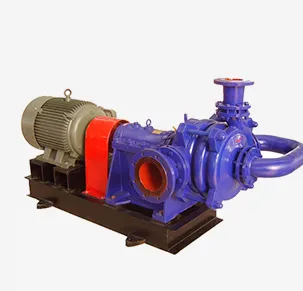English
- Afrikaans
- Albanian
- Amharic
- Arabic
- Armenian
- Azerbaijani
- Basque
- Belarusian
- Bengali
- Bosnian
- Bulgarian
- Catalan
- Cebuano
- Corsican
- Croatian
- Czech
- Danish
- Dutch
- English
- Esperanto
- Estonian
- Finnish
- French
- Frisian
- Galician
- Georgian
- German
- Greek
- Gujarati
- Haitian Creole
- hausa
- hawaiian
- Hebrew
- Hindi
- Miao
- Hungarian
- Icelandic
- igbo
- Indonesian
- irish
- Italian
- Japanese
- Javanese
- Kannada
- kazakh
- Khmer
- Rwandese
- Korean
- Kurdish
- Kyrgyz
- Lao
- Latin
- Latvian
- Lithuanian
- Luxembourgish
- Macedonian
- Malgashi
- Malay
- Malayalam
- Maltese
- Maori
- Marathi
- Mongolian
- Myanmar
- Nepali
- Norwegian
- Norwegian
- Occitan
- Pashto
- Persian
- Polish
- Portuguese
- Punjabi
- Romanian
- Russian
- Samoan
- Scottish Gaelic
- Serbian
- Sesotho
- Shona
- Sindhi
- Sinhala
- Slovak
- Slovenian
- Somali
- Spanish
- Sundanese
- Swahili
- Swedish
- Tagalog
- Tajik
- Tamil
- Tatar
- Telugu
- Thai
- Turkish
- Turkmen
- Ukrainian
- Urdu
- Uighur
- Uzbek
- Vietnamese
- Welsh
- Bantu
- Yiddish
- Yoruba
- Zulu
Telephone: +86 13120555503
Email: frank@cypump.com
Sep . 15, 2024 20:49 Back to list
Basement Sewage Ejector Pump - Efficient Waste Management Solutions
Understanding Basement Sewage Ejector Pumps
Basement sewage ejector pumps play a crucial role in modern plumbing systems, particularly in homes with below-grade bathrooms or any other fixtures that are located below the main sewer line. When wastewater needs to be expelled from these lower levels, a sewage ejector pump is deployed to lift and transport the effluent to the sewer or septic system. Understanding how these pumps work and their importance can help homeowners maintain their plumbing systems effectively.
How Do Sewage Ejector Pumps Work?
Sewage ejector pumps are specially designed to handle wastewater that contains solids. Unlike standard sump pumps that only deal with clear water, these pumps have powerful motors capable of grinding up solid waste materials before pumping them out. When wastewater enters the ejector basin, a float switch activates the pump. The impeller then rotates, creating a pressure that pushes the wastewater through the discharge pipe and up into the sewer line.
The installation of an ejector pump typically involves placing a sealed basin underground, which collects the sewage from the connected fixtures. This sealed system prevents any unpleasant odors from escaping into the basement. It is essential to ensure proper installation and usage to avoid issues such as backflow or pump failure.
basement sewage ejector pump

Why Are Ejector Pumps Important?
Without an ejector pump, a basement bathroom or laundry would be nearly unusable, as the sewage would have nowhere to go. Traditional gravity systems are not feasible when plumbing is situated below the main sewer line. Ejector pumps not only facilitate the safe disposal of wastewater, but they also help prevent potential flooding and backups that could lead to costly repairs and health hazards.
Maintenance Tips
Regular maintenance is essential for the longevity and efficiency of sewage ejector pumps. Homeowners should periodically check the system to ensure it is functioning properly. This includes inspecting the float switch for any obstructions and cleaning the basin to prevent clogs. It’s also wise to have a professional inspect and service the pump at least once every few years.
In conclusion, basement sewage ejector pumps are vital components in many homes, particularly those with below-ground fixtures. They ensure effective removal of wastewater, protect against flooding, and contribute to overall plumbing health. Understanding their function and maintenance can help homeowners manage their sewage systems more effectively.
-
ISG Series Vertical Pipeline Pump - Chi Yuan Pumps Co., LTD.
NewsJul.30,2025
-
ISG Series Vertical Pipeline Pump - Chi Yuan Pumps Co., LTD.|energy-efficient fluid handling&industrial durability
NewsJul.30,2025
-
ISG Series Vertical Pipeline Pump - Chi Yuan Pumps | Advanced Engineering&Industrial Efficiency
NewsJul.30,2025
-
ISG Series Pipeline Pump - Chi Yuan Pumps | High Efficiency, Energy Saving
NewsJul.30,2025
-
ISG Series Vertical Pipeline Pump-Chi Yuan Pumps|High Efficiency&Reliable Performance
NewsJul.29,2025
-
ISG Series Vertical Pipeline Pump|High Efficiency&Low Noise
NewsJul.29,2025










